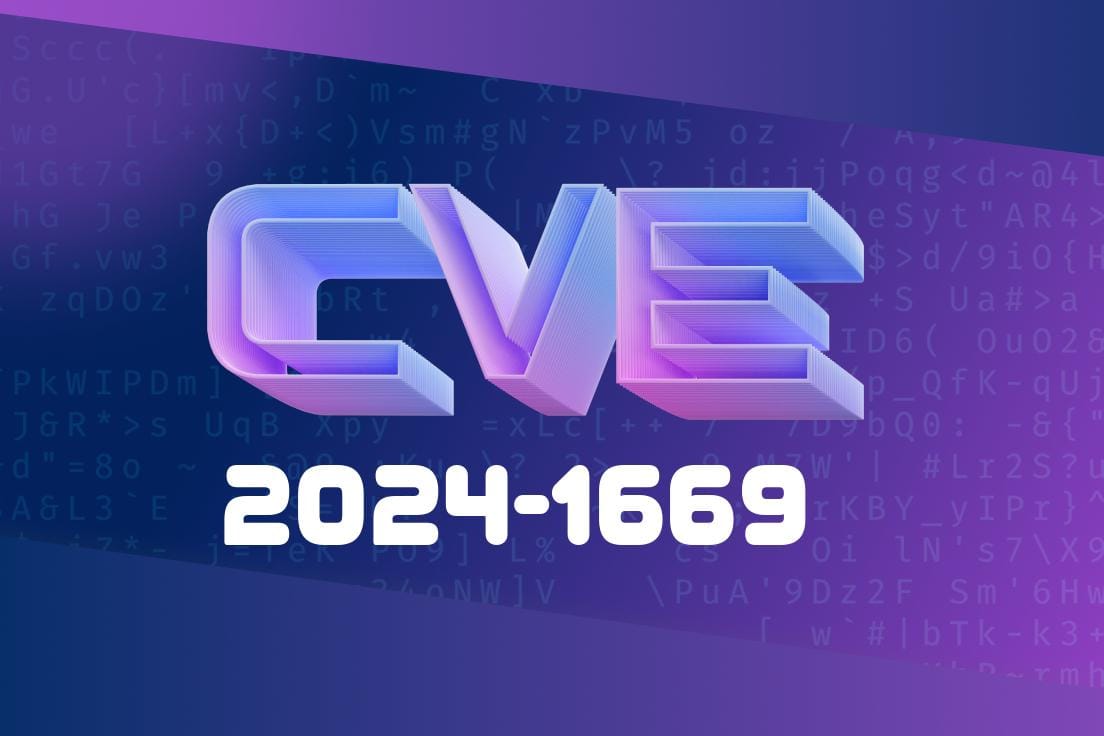A high-severity vulnerability, CVE-2024-1669, was identified in Google Chrome's rendering engine, Blink, which potentially allowed remote attackers to execute arbitrary code on a user's system by crafting a malicious HTML page. In this post, we will discuss the vulnerability, reproduction steps, and available exploit details along with code snippets, which will provide valuable insight to security researchers and developers alike.
It's important to note that this vulnerability affects Google Chrome versions prior to 122..6261.57, and it is highly recommended to update your Chrome browser to the latest version to mitigate the risk associated with this particular vulnerability. You can find more information about CVE-2024-1669 in the linked Chromium Security Advisory.
Vulnerability Details
The vulnerability, identified as CVE-2024-1669, exists in the Blink engine, a part of Google Chrome responsible for rendering web content. A remote attacker could perform out-of-bounds memory access by generating a specially crafted HTML page, ultimately leading to the execution of arbitrary code on the victim's computer.
The Chromium security severity rating for CVE-2024-1669 is 'High', implying that it poses a significant risk for users if exploited. As far as the impact is concerned, successful exploitation can lead to the disclosure of sensitive information, compromise user accounts, and even allow an attacker to gain unauthorized access to a user's system.
Reproducing the Vulnerability
The following steps outline how to reproduce the vulnerability on an affected version of Google Chrome:
1. Set up an HTML page, and paste a malicious JS code snippet that triggers the out-of-bounds memory access:
<!DOCTYPE html>
<html>
<head>
<title>Exploit CVE-2024-1669</title>
<script>
// Your malicious JS code here
...
</script>
</head>
<body onload="exploit()">
</body>
</html>
Using a vulnerable version of Google Chrome, navigate to the URL of the hosted HTML page.
4. The browser should render the page, executing the malicious JS code, and triggering the vulnerability.
Exploit Details
Although specific exploit details for CVE-2024-1669 are not publicly available, the following example is a general outline of what a malicious JS code snippet may entail:
function exploit() {
const arrSize = 10;
const buffer = new ArrayBuffer(arrSize);
const view = new DataView(buffer);
// An out-of-bounds write operation
view.setUint8(arrSize + some_offset, payload_value);
// Another possible out-of-bounds read operation
const result = view.getUint8(arrSize + some_other_offset);
// Further code execution to leverage the vulnerability
...
}
Note that the provided code snippet is an oversimplification of a potential exploit. Real exploits may be more sophisticated and use different techniques to cause a larger impact.
Mitigation and Remediation
As previously mentioned, the vulnerability exists in Google Chrome versions prior to 122..6261.57. To protect yourself against any potential exploit, it is essential to update your Chrome browser to the latest version. You can verify and update your browser's version by navigating to Menu > Help > About Google Chrome within the browser.
Conclusion
Understanding vulnerabilities like CVE-2024-1669 is crucial for developers and security professionals to ensure web applications are secure and protect users' sensitive information. Keep your browser software up-to-date to reduce the risk associated with these types of high-severity vulnerabilities and always pay attention to best security practices when developing web applications.
Timeline
Published on: 02/21/2024 04:15:08 UTC
Last modified on: 02/26/2024 16:27:52 UTC
